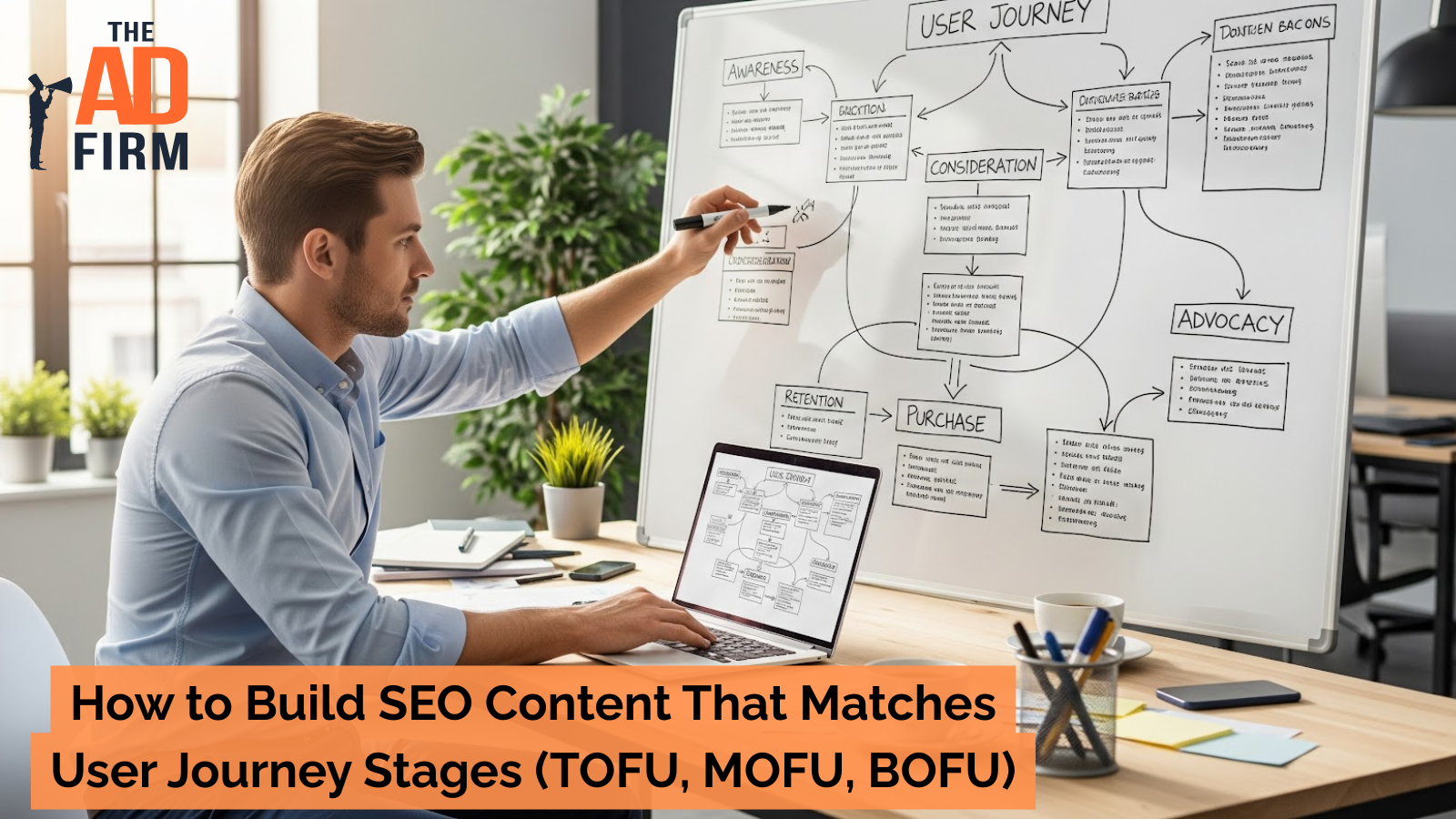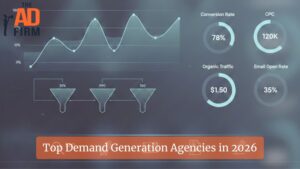SEO content works best when it speaks directly to where someone is in their decision-making process. Marketers often call this path the “funnel,” which has three main stages: TOFU (Top of Funnel – awareness), MOFU (Middle of Funnel – consideration), and BOFU (Bottom of Funnel – decision).
At the awareness stage, people are just learning about a problem or topic. In the consideration stage, they are weighing options. By the decision stage, they are ready to commit.
For businesses, the challenge lies in creating the right content for each stage, rather than treating every visitor the same. This is where working with an experienced SEO company can make a difference.
By understanding how people move from casual browsers to paying customers, you can design content that feels useful instead of pushy.
This guide will break down what each stage means, what kind of content fits, and how you can use SEO to guide your audience step by step.
Why Matching Content to the Funnel Matters
Creating content without considering the funnel often leads to confusion for both businesses and audiences. By aligning your SEO strategy with each stage of the journey, you ensure content feels natural, builds trust, and supports long-term growth.
- Avoids wasted effort: When content doesn’t match where someone is in their journey, it often misses the mark. For instance, trying to sell a product to someone who only wants basic information can feel out of place. Matching the content to the funnel ensures your efforts are focused on the right people at the right time.
- Builds trust gradually: People rarely make buying decisions instantly, especially for higher-value products or services. Content that guides them patiently from awareness to decision creates a sense of credibility. Instead of feeling pressured, audiences come to see your brand as a helpful resource they can rely on.
- Improves SEO performance: Search engines reward content that aligns with what users are looking for. Informational keywords work better at the top of the funnel, while transactional keywords fit the bottom. By aligning your strategy with user intent, you not only rank higher but also attract visitors who are more likely to stay engaged.
Building SEO Content for Every Funnel Stage
Every stage of the funnel calls for a different type of content. By tailoring your SEO strategy to awareness, consideration, and decision stages, you’ll meet people where they are and guide them naturally toward becoming customers.
Maximize Your Online Impact with The Ad Firm
- Local SEO: Capture the local market with strategic SEO techniques that drive foot traffic and online sales.
- Digital PR: Boost your brand’s image with strategic digital PR that connects and resonates with your audience.
- PPC: Implement targeted PPC campaigns that effectively convert interest into action.
TOFU (Top of Funnel) – Awareness Stage
At the top of the funnel, people are just discovering a problem or curiosity and are looking for basic information. Content here should focus on education and visibility rather than direct selling.
- Use broad, informational keywords: Searches like “what is,” “how to,” “ideas,” or “tips” signal that someone is in discovery mode. These keywords are not meant to sell but to introduce people to a topic. Ranking for them builds visibility and brings in traffic that may later turn into customers. It’s the first step in creating trust with your audience, and it also lays the groundwork for ecommerce SEO when building visibility for online stores..
- Publish educational content: Blog posts, step-by-step guides, and how-to articles answer the questions your audience is already asking. This type of content positions your brand as a helpful resource rather than a seller. By solving small problems upfront, you make your business memorable for when bigger decisions come later. For many users, this is their first real impression of your expertise.
- Share engaging formats: Infographics, explainer videos, or social media posts are great for spreading awareness. Visual content is easier to consume and more likely to be shared, which broadens your reach. These formats help you connect with people who prefer quick insights over long reads. Over time, this visibility fuels a steady stream of new visitors.
MOFU (Middle of Funnel) – Consideration Stage
At this point, users understand their problem and are weighing possible solutions. Content here should highlight why your brand is a credible option without overwhelming readers with a sales pitch. This is also where working with a digital marketing agency can help craft resources that demonstrate expertise while staying user-friendly.
- Target comparison-style keywords: Phrases like “best,” “reviews,” or “[product] vs [competitor]” show clear intent to compare. These keywords attract people who are actively exploring their options. By ranking for them, your business enters the shortlist of possible solutions. It gives you a chance to show your strengths early.
- Create in-depth resources: Case studies, ebooks, or webinars work well because they dive deeper into how your solution addresses problems. These formats offer proof that you understand your customers’ needs. They also collect more engaged leads since people willing to download or attend are already showing interest. In short, it’s a way to educate while building trust.
- Build trust with proof: Sharing success stories or detailed examples reassures readers that your solution works. Real results from past clients make your offering feel more reliable. People are far more likely to believe authentic stories than broad promises. This credibility can be the tipping point for someone still comparing options.
BOFU (Bottom of Funnel) – Decision Stage
Here, users are ready to act. Content at this stage should make it as easy as possible to choose your business with confidence.
Streamline Your Digital Assets with The Ad Firm
- Web Development: Build and manage high-performing digital platforms that enhance your business operations.
- SEO: Leverage advanced SEO strategies to significantly improve your search engine rankings.
- PPC: Craft and execute PPC campaigns that ensure high engagement and superior ROI.
- Optimize for transactional searches: Keywords like “pricing,” “demo,” or “buy now” indicate strong purchase intent. By targeting these terms, you attract people who are close to making a decision. Optimizing for them ensures you appear right when someone is ready to commit. It’s the final nudge that turns interest into action.
- Strengthen product and service pages: Detailed descriptions, clear benefits, and prominent calls-to-action (CTAs) guide people toward converting. These pages should be polished, easy to read, and focused on what customers gain. A straightforward layout reduces hesitation and makes the next step obvious. When done right, these pages act as your most potent sales tool.
- Highlight social proof: Testimonials, reviews, and free trial offers provide reassurance for buyers on the fence. Seeing that others have trusted your brand makes new customers feel safer. Free trials or demos lower the risk by letting them test before committing. This combination of reassurance and easy access builds confidence to move forward.
Read Also: What to Include in a Local SEO Monthly Report: 7 Metrics That Matter
Putting It All Together – Mapping the Funnel
Strong SEO doesn’t stop at creating content for each stage; it’s about connecting them into a path that feels natural for the reader. By mapping TOFU, MOFU, and BOFU content together, you guide people smoothly from learning to choosing without making the journey feel forced.
- Do structured keyword research: Start by grouping keywords according to intent. Informational terms belong at the awareness stage, comparison keywords fit the middle, and purchase-focused terms drive decision-stage content. This ensures each page has a clear purpose. It also helps avoid competing against yourself in search results.
- Map content clusters: Use TOFU articles as the foundation, then connect them to deeper MOFU and BOFU resources. For example, a blog explaining “what is content marketing” can link to a guide comparing tools, which then points to your service page. This creates a logical flow from curiosity to action. Over time, clusters also help search engines understand your authority on a topic.
- Use internal linking: Links within your site act as signposts that show readers where to go next. Instead of leaving them at a single article, point them toward the next step in their journey. This reduces drop-offs and keeps people engaged longer. A clear linking structure also boosts SEO by strengthening page relationships.
- Measure performance separately: Track awareness, engagement, and conversions as distinct goals rather than lumping them together. For example, traffic growth is more critical for TOFU, while downloads or sign-ups matter at MOFU, and purchases define BOFU success. Measuring each stage on its own terms gives a clearer picture of what’s working. It also prevents misleading results that come from mixing all metrics.
Measuring Success Across the Funnel
Publishing funnel-aligned content is only half the job; the other half is understanding how well it performs. By measuring the right signals at each stage, you can see what’s working, what needs adjustment, and where to focus next.
Advance Your Digital Reach with The Ad Firm
- Local SEO: Dominate your local market and attract more customers with targeted local SEO strategies.
- PPC: Use precise PPC management to draw high-quality traffic and boost your leads effectively.
- Content Marketing: Create and distribute valuable, relevant content that captivates your audience and builds authority.
- Top of Funnel metrics: Track organic traffic, impressions, and social shares to gauge your content’s attention. High reach here means your awareness efforts are paying off. If numbers are low, revisit keyword choices or content formats. This helps ensure you’re speaking to the broadest possible audience.
- Middle of Funnel metrics: Focus on engagement, such as time spent on page, resource downloads, or webinar sign-ups. These actions show people are actively considering your solutions. Steady increases in engagement mean your content is convincing readers to stay connected. Without these signals, it may be hard to move people closer to purchase.
- Bottom of Funnel metrics: Monitor conversion actions like demo requests, trial sign-ups, or direct purchases. These are the clearest signals that your content is driving results. If conversions lag despite substantial traffic, it may point to gaps in CTAs or page clarity. Fixing these areas can directly improve revenue outcomes.
- Content journey flow: Check how readers move from TOFU to MOFU to BOFU pages. Strong internal linking should create a smooth path without sudden drop-offs. If people leave after awareness content without progressing, you may need better calls to action or more relevant middle-stage resources. Watching this flow highlights weak spots in the funnel, especially for businesses relying on local SEO services, where guiding users from general searches to local intent pages is critical.
- Return on investment (ROI): Tie funnel performance back to revenue and costs. For example, calculate how much traffic or leads each content type brings compared to the resources spent creating it. This shows whether your funnel strategy is sustainable and profitable. Over time, ROI helps prioritize which types of content to scale further.
Turn Your Content Into a Growth Engine
If you want your content to do more, attract curious readers, build trust, and convert at the right moment, we’ve got you covered. At The Ad Firm, we blend strategy, SEO expertise, and audience-focused storytelling to give every piece of content a clear purpose in your customer journey.
We create TOFU content that educates and attracts, MOFU assets like case studies and guides that build authority, and BOFU pieces such as service pages and reviews that drive conversions. Our SEO content planning ensures your keywords, internal links, and clusters align to move users smoothly from awareness to decision.
Transform Your Online Strategy with The Ad Firm
- SEO: Achieve top search rankings and outpace your competitors with our expert SEO techniques.
- Paid Ads: Leverage cutting-edge ad strategies to maximize return on investment and increase conversions.
- Digital PR: Manage your brand’s reputation and enhance public perception with our tailored digital PR services.
If you’re ready to create content that matches your audience’s moments and moves them toward becoming customers, contact The Ad Firm today to build your funnel-driven SEO content plan.





